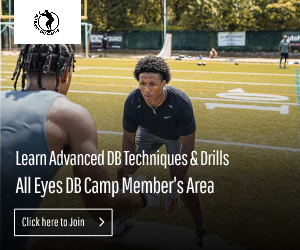If you’re like me, then you may sometimes get annoyed when fans and inexperienced players speak boldly on pass interference without understanding the rules.
With the audience watching football increasing on a daily basis, so too are the comments on social media when people see a clip from a game. In particular, fans like to comment on pass plays when they feature the wide receiver versus the defensive back. More times than not, fans are wrong about exactly what pass interference is. With that said, I decided it would be a good idea to post this primer on pass reference for the readers of this blog. Enjoy and most of all, you are now informed. Ignorance will no longer be an excuse.
The rules governing pass interference in the NFL differ significantly from those in high school football. Understanding these differences is crucial for players, coaches, and fans alike. This article will explore the key distinctions between pass interference rules in the NFL and high school football.
The Basics of Pass Interference
Pass interference occurs when a player impedes an opponent’s opportunity to catch a pass. It can be committed by either an offensive or defensive player, and the penalties are designed to maintain fair play and competition.
Common Elements:
Interfering with the Receiver:
Both levels penalize players who make contact with the intended receiver before the ball arrives, hindering their ability to make the catch.
Right to the Ball:
Both offensive and defensive players have an equal right to the ball, provided they are making a legitimate attempt to catch it.
Differences in Rules and Enforcement
While the core concept of pass interference is similar, the rules and their enforcement vary between the NFL and high school football, governed by the National Federation of State High School Associations (NFHS).
1. Penalty Yardage
NFL:
Defensive Pass Interference (DPI):
The ball is placed at the spot of the foul, resulting in a significant gain for the offense. If the foul occurs in the end zone, the ball is placed at the one-yard line.
Offensive Pass Interference (OPI):
The penalty is 10 yards from the previous spot and a loss of down.
High School:
Defensive Pass Interference (DPI):
The penalty is 15 yards from the previous spot, regardless of where the foul occurred on the field. It also results in an automatic first down.
Offensive Pass Interference (OPI):
The penalty is 15 yards from the previous spot, and the down is replayed.
The NFL’s spot foul rule can result in much more significant yardage gains compared to the fixed 15-yard penalty in high school football.
2. Face-Guarding
NFL:
Face-guarding (attempting to block the receiver’s vision without turning to look for the ball) is not considered pass interference unless contact is made.
High School:
Face-guarding is explicitly considered pass interference, even if there is no contact, as it impedes the receiver’s ability to make the catch.
3. Incidental Contact
NFL:
Incidental contact, where players unintentionally collide while attempting to make a play on the ball, is not penalized.
High School:
The NFHS rules also allow for incidental contact, as long as it does not hinder the receiver’s opportunity to catch the ball. However, the interpretation can sometimes be stricter compared to the NFL.
4. Contact Beyond Five Yards
NFL:
Defenders are allowed to make contact with receivers within the first five yards from the line of scrimmage. Any significant contact beyond five yards before the ball is thrown is penalized as illegal contact, not pass interference.
High School:
High school football plays under the NCAA rule states that contact may be made with a receiver if the ball isn’t in the air. If the quarterback had thrown the ball, then the contact was made, it would be a pass interference call.
5. Automatic First Down
NFL:
Defensive pass interference results in an automatic first down for the offense.
High School:
Similarly, defensive pass interference results in an automatic first down. However, offensive pass interference does not carry an automatic first down penalty; instead, the down is replayed after a 15-yard penalty.
Understanding the difference between pass interference in the different levels of football is obviously important for those that are participating in it. However, it’s crucial for fans who are seeking to have an understanding of the game that they are spending many hours watching. At the very least, it will decrease your stress levels to actually know what is pass interference and what is not. It does you no good to be shouting at the television calling for a penalty when one is not warranted. I hope that this article was successful in bringing you to a complete understanding of pass interference at all levels in the game of football.
For more in-depth discussions on football rules and strategies, continue visiting AllEyesDBCamp.com.
Chad Wilson is the owner of All Eyes DB Camp and author of "101 DB Tips". He played college football at the University of Miami and briefly in the NFL for the Seattle Seahawks. Over his 15 year high school football coaching career, he tutored over a dozen Division I defensive backs and as a trainer has worked with NFL All Pros, first round draft picks, college football All Americans and Top 10 ranked high school football prospects.





